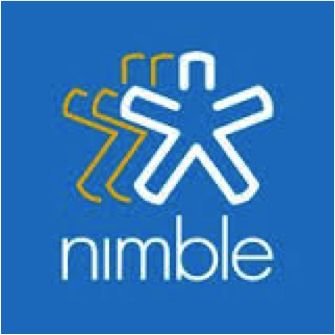
I haven’t written about Nimble in a while. Probably a mistake, because there is always something interesting going on in the Nimble world.
Already on October 19 2021, Nimble announced the availability of a workflow functionality that is targeted at enabling teams to replace spreadsheets with a when following through processes.
Nimble workflows support
- Relating workflows to contact records with the objective of getting a complete overview of the relationship, including interaction history, attachments and custom fields
- Managing business workflows across departments to support more than sales and marketing needs
- Pre-built workflow templates that are delivered by Nimble to already support a variety of common workflows for short time-to-value
- Creating own workflows by modifying the delivered templates or creating new ones from scratch
- Visualization in a Kanban- or spreadsheet style with inline editing for making quick changes
- Offering the ability to add contacts to workflows from emails, websites, web forms, social media, business apps or via Zapier/Integromat and Nimble’s API
In the words of Jon Ferrara, Nimble founder and CEO: “Repeatable processes are key to scaling a business, but managing external contact-related workflows across an entire company has historically been very difficult. Most CRM’s are built for salespeople while non-sales teams end up using spreadsheets to manage people processes. Since Nimble is in the business of relationship-building, we realize the importance of effective collaboration. With [Nimble] Workflows, every department in your organization can now manage all people-related processes within your CRM!”
As part of the announcement, Nimble emphasizes on its enhanced positioning as being built for the whole company and “not just sales and marketing teams.”
Workflows are something that all companies need for efficient management of non-trivial activities and tasks. They are a basic foundation of repeatable processes and are also important for collaboration between people. Workflows also often stretch across several departments and different applications. Younger and/or smaller companies normally do not have systems in place that allow to manage workflows across departments or only systems, hence the use of spreadsheets or tools like Trello, the planner in MS Teams, Zoho Projects, etc. They also often use communications tools like Slack, MS Teams or Zoho Cliq to further facilitate collaboration. This means that workflow tools need to be able and be built to seamlessly work with communications tools, either via federated logins or, better, by direct integration. To add to complexity, workflow tools need to also support different kinds of communication. For example, how about colleagues that prefer e-mail to an in-app solution?
It is true that many businesses in the market that is addressed by Nimble did not yet implement solutions for workflows that extend departments. Instead, they often have different systems in place. These need to get connected, so the approach of directly opening up workflows via integration tools and the Nimble API is important.
With Workflows, Nimble starts to close one of the bigger functional gaps that prevent users from receiving more value from the system by creating visibility and (later) reducing tedious work by triggering automations. This way, Nimble supports a business’s growth. The workflows as offered by Nimble are following the same principle as the already existing lead pipeline and are generalizing it, which creates instant familiarity. The delivery of pre-built workflows that support many common use cases as part of the solution already increases time-to-value for users. In addition it is easy and straightforward to build additional workflows that meet more specific requirements.
Having a kanban-style overview that supports drag and drop to move activities from one stage to another is the first step away from using spreadsheets to keep an overview. For the system to be of real help to its users it also needs automation. Of course, Nimble is aware of this. Consequently, there is more to come, from the simple to the more complex, including changes that are based on user interactions and then changes that happen triggered by field changes. These additions will create significant additional value for the users.
Nimble’s enhanced positioning as being built not only for sales and marketing teams is quite noteworthy as it shows Nimble’s increasing maturity. The system started in the sales force automation area, as a social selling tool for small teams, and now starts to target whole (SMB) companies, where people related processes are affected. Commercially, this step also opens up Nimble to additional user groups within customer companies.
With Nimble being one of the few applications that are available where the user is, I am curious to see how Nimble workflows will work with collaboration and communications tools in later releases, i.e. not requiring users to go into the Nimble app. Another interesting point is in how far Nimble Workflows can include users that else do not use Nimble.
Technically, with Workflows Nimble is taking steps outside the SFA market. Positioning Nimble generically as the tool for relationship building is a straightforward, yet interesting step.
It will be equally interesting to see how the supported corporate scope and Nimble’s positioning evolve over time.




Does the Nimble platform allow you to track and manage contact info across departments?
so far, everyone needs a user, which is one of the weaknesses at this stage, from then on the department doesn’t matter.